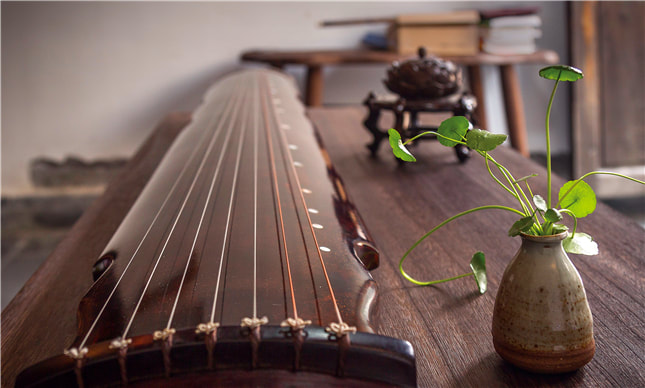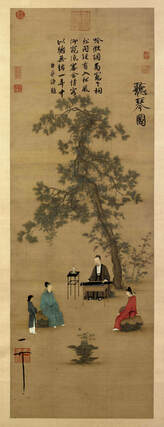China
|
Gu Qin 古琴
|
There is probably no classical instrument in China more loved and revered than the Gu Qin. So many of the great masters of the Gu Qin played it to harmonize with the infinite, to find joy and solace, to share and entertain. It is sometimes called the "the father of Chinese music" and "the instrument of the sages." It's harmonic sounds echo through the ages and unifies the myriad of things. When played by a master it is like a magic carpet taking us through time and space to more perfect worlds.
Originally it was just called Qin, but the word "Gu" which means "ancient" was added later. It was played by many or most masters of everything in ancient China including Confucius, poets Qu Yuan and Li Bai, master strategist of all time Zhuge Liang, emperors and monks, scholars of every kind and more. A great internet site about Gu Qin was put together by John Thompson: http://www.silkqin.com/ The photo at the top of this page is from: Guqin Art of Zhe School www.ehangzhou.gov.cn/2018-06/14/c_242853.htm |

